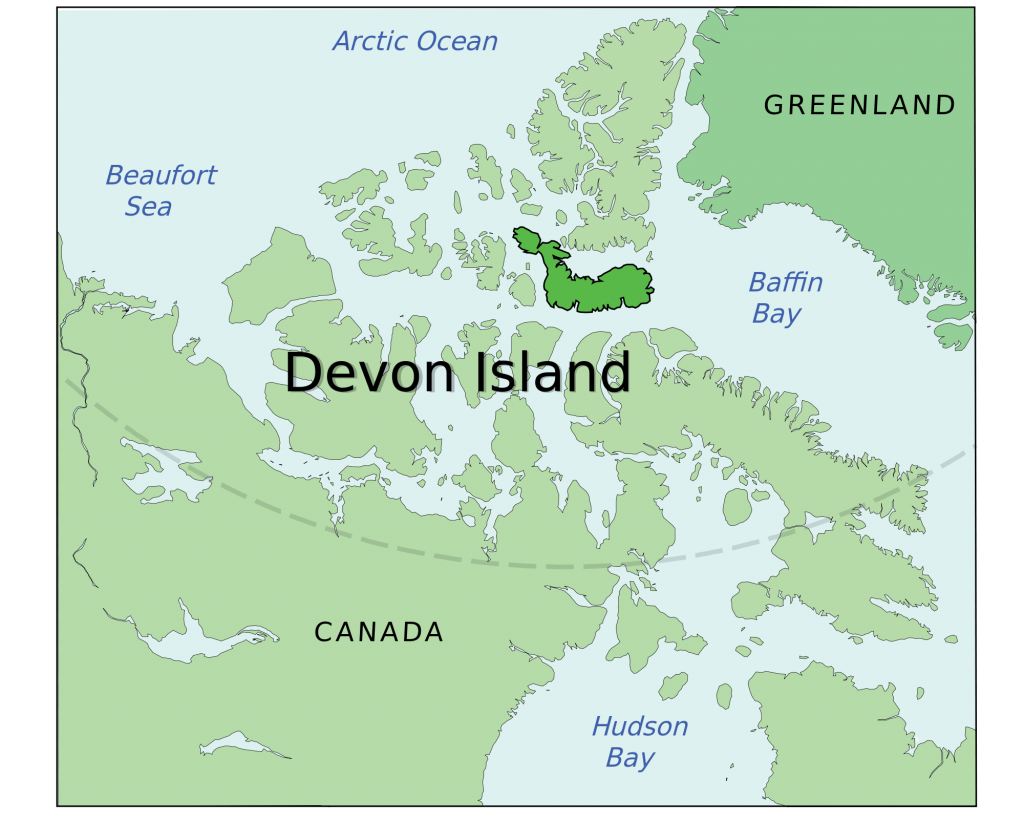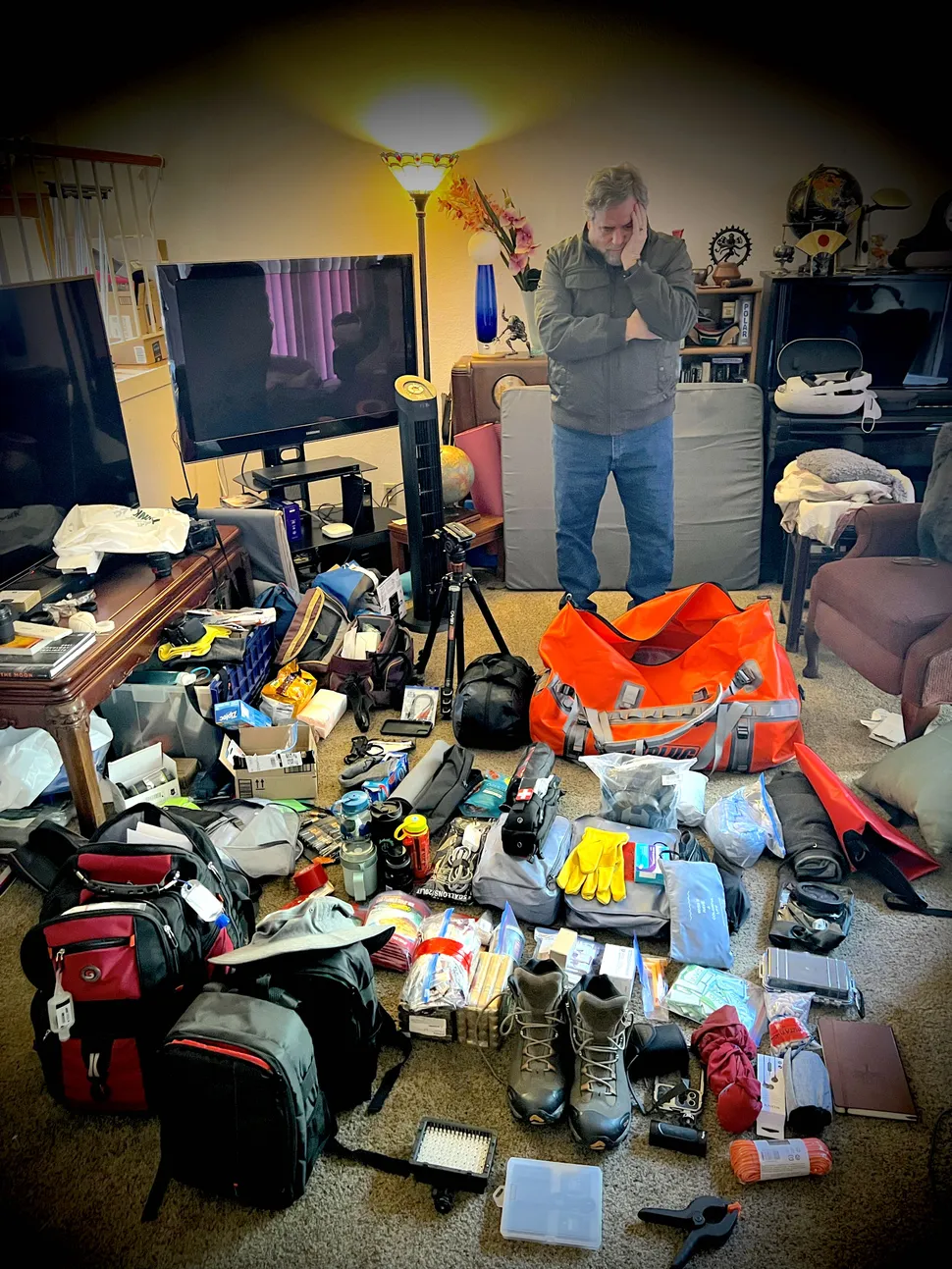New Mars Forums
You are not logged in.
- Topics: Active | Unanswered
Announcement
#101 2019-10-05 19:14:07
- SpaceNut
- Administrator
- From: New Hampshire
- Registered: 2004-07-22
- Posts: 30,025
Re: Testing My Hacienda On Mars Society Devon Island
Energy from the sun
Devon Island is the largest uninhabited island on Earth. It is found at 75oN and has surface characteristics that strongly resemble the surface of Mars. Being so far north, Devon Island has solar irradiance similar to the solar irradiation on the Martian Equator. Except for a brief period in June, the intensity of the Sun on Devon Island never exceeds the solar intensity on Mars.
Although the light intensity (near local noon only) on Devon Island is similar to that expected on the Martian Equator, the duration of daylight during this time is 24 hours per day because of its high latitude (above the Arctic Circle).
On Mars, near the equator, the duration of daylight is about 12 hours, followed by approximately 12 hours of darkness.
Mars, spring is 7 months, summer is 6 months, fall is 5.3 months and winter is a little over 4 months long..
https://www.slideshare.net/vijayraskar5 … alculation
Edit reference
https://www.ossila.com/pages/solar-cells-theory
The oscurity opaceness of the light and difussing of its energy can not be predicted for intensity level or for its duration hence why we need more than solar for mars.
Offline
Like button can go here
#102 2019-10-06 07:04:37
- tahanson43206
- Moderator
- Registered: 2018-04-27
- Posts: 23,627
Re: Testing My Hacienda On Mars Society Devon Island
For SpaceNut re #101
Thanks for this overview of Devon Island, and for the link to the slideshare site, which I had not seen before. It appears to have potential for further visits.
The computation of light levels would appear (to me at least) to have direct application for lighting of interior spaces.
I'm still hoping someone will discover any available reports from the Russians on their development of subterranean living/working spaces in their far North.
(th)
Offline
Like button can go here
#103 2019-12-28 20:42:05
- SpaceNut
- Administrator
- From: New Hampshire
- Registered: 2004-07-22
- Posts: 30,025
Re: Testing My Hacienda On Mars Society Devon Island
We need to keep in mind that we will make methane by other means such as an Anaerobic Digester to Convert Organic Wastes into Biogas: System Setup and Basic Operation this would also include feeding algea that is not used into the source of materials to feed the digester....
https://sswm.info/sswm-solutions-bop-ma … l-scale%29
The calorific value of biogas is about 6 kWh/m3, what corresponds to about half a litre of diesel oil.
The atmosphere of Mars is the layer of gases surrounding Mars. The atmospheric pressure on the Martian surface averages 600 pascals (0.087 psi), about 0.6% of Earth's mean sea level pressure of 101.3 kilopascals (14.69 psi)...
While the oceans have more co2 desolved it still makes sense to test out production safety for anything we would want to send to mars.
Offline
Like button can go here
#104 2021-11-25 13:09:17
- SpaceNut
- Administrator
- From: New Hampshire
- Registered: 2004-07-22
- Posts: 30,025
Re: Testing My Hacienda On Mars Society Devon Island
Offline
Like button can go here
#105 2021-11-25 13:37:45
- Calliban
- Member
- From: Northern England, UK
- Registered: 2019-08-18
- Posts: 4,278
Re: Testing My Hacienda On Mars Society Devon Island
The average insolation in the SE England is 1000kWh per square metre per year. That works out to an average of 114W/m2. About 50% of the Martian surface receives more insolation than that. In Scotland, insolation is between 700-800kWh/m2 per year. The UK has one the highest agricultural productivity in the world.
I don't think Martian insolation levels pose a severe limitation to crop growth. A bigger challenge is keeping agricultural areas warm. There is enough light to sustain most crops. But not enough heat. Frost kills most plants.
Last edited by Calliban (2021-11-25 13:42:28)
"Plan and prepare for every possibility, and you will never act. It is nobler to have courage as we stumble into half the things we fear than to analyse every possible obstacle and begin nothing. Great things are achieved by embracing great dangers."
Offline
Like button can go here
#106 2022-08-26 09:32:36
- Mars_B4_Moon
- Member
- Registered: 2006-03-23
- Posts: 9,776
Re: Testing My Hacienda On Mars Society Devon Island
Picture
A month on ‘Mars’: Preparing to visit the Red Planet … on Earth
http://marsnews.com/archives/2022/08/10 … earth.html
Haughton Crater and the Haughton-Mars Project (HMP) base on Canada’s Devon Island.
Space dot com article
A month on 'Mars': Preparing to visit the Red Planet ... on Earth
https://www.space.com/month-on-mars-ear … g-to-visit
Many Mars-like features make Devon Island possibly the best Red Planet analog on Earth.
HMP Field Report: MIT – Modeling and Researching the Logistics of the Haughton-Mars Project Research Station
https://spaceref.com/status-report/hmp- … h-station/
As part of the NASA funded Human and Robotics Technology (HRT) project on “Interplanetary Supply Chain Management & Logistics Architectures” we are researching the applicability of terrestrial supply chains to planetary exploration. One of these tasks (WBS 2.3) includes modeling and researching the logistics of the Haughton-Mars Project Research Station (HMPRS). The overall goal is to obtain lessons learned for Supply Chain Management (SCM) to remote environments and to test new technologies and procedures that will
enhance the ability of humans and robots to jointly explore remote
environments on the Earth, the Moon and Mars.
Offline
Like button can go here
#107 2022-08-26 19:51:16
- SpaceNut
- Administrator
- From: New Hampshire
- Registered: 2004-07-22
- Posts: 30,025
Re: Testing My Hacienda On Mars Society Devon Island
There really has been lots of good stuff coming out from these sites but the supply chain and packing is the one you cannot fail at.
Now how am I going to pack this into a space that is smaller than the largest item?

It is surprising to see how much stuff you need to a earth location, just think if you need to pack for redundancy for mars
Offline
Like button can go here
#108 2022-10-04 09:20:34
- Mars_B4_Moon
- Member
- Registered: 2006-03-23
- Posts: 9,776
Re: Testing My Hacienda On Mars Society Devon Island
It seems isolation and depression has an impact on teen life with news of a Coroner’s inqueston the death of First Nations teenager who went missing from group home.
We do have threads which talk about psycological issues and mental health in a far away colony.
Devon Island and Mars Analogues.
A feat still making news
Here is an experience shared by a space historian on “A Month on Mars”
https://web.archive.org/web/20221004151 … h-on-mars/
The Haughton-Mars Project on Devon Island served as a reminder of both one conceivable future and our frenzied and violently altering past. It is a vast, desolate, and ominous terrain, covered in grit and dust, with boulders and other structures that are uniformly sharp enough to sever skin. However, the far views show gentle undulating plains with sporadic buttes, gullies, and low hills. The valleys wind interminably from one place to another, with a few trapped lakes of brilliant meltwater scattered everywhere.
Arctic Ocean acidifying up to four times faster than any other sea on Earth
https://www.baytoday.ca/national-news/a … th-5888329
15% of Canada's electricity comes from nuclear power, with 19 reactors mostly in Ontario providing 13.5 GWe of power capacity.
All currently operating Canadian nuclear reactors are a type of pressurized heavy-water reactor (PHWR) of domestic design, the CANDU reactor and CANDU reactors have been exported to other nations or kingdom and states.
Older news
2012 archive
"Canada and China work on Thorium Candu Fuel and India May Start Mining 1 million tons of Thorium"
https://web.archive.org/web/20120806041 … candu.html
Last edited by Mars_B4_Moon (2022-10-04 09:28:00)
Offline
Like button can go here
#109 2022-10-26 19:24:21
- Mars_B4_Moon
- Member
- Registered: 2006-03-23
- Posts: 9,776
Re: Testing My Hacienda On Mars Society Devon Island
Offline
Like button can go here
#110 2023-08-17 10:03:48
- Mars_B4_Moon
- Member
- Registered: 2006-03-23
- Posts: 9,776
Re: Testing My Hacienda On Mars Society Devon Island
Mars Society begins simulated Red Planet mission in Canadian Arctic
https://www.space.com/mars-society-simu … rctic-2023
"We believe that our missions are playing a small, but significant role in advancing humanity's journey to Mars."
The crew members include:
Andrew Wheeler (Australia), a senior geologist, veteran analog astronaut and crew commander.
Terry Trevino (U.S.), an aerospace scientist and Ph.D. student, founder of the non-profit Space4All and crew XO and scientist.
Olivia Drayson (U.K.), a Ph.D. candidate and researcher, ESA project collaborator and crew mission science lead and scientist.
Andy Greco (U.S.), an engineering team lead with Boeing (Seattle) and crew engineer.
Caleb L. Pool (U.S.), a mechanical systems design engineer with Boeing (Seattle), a certified firefighter, pilot, and EMT and crew engineer.
Offline
Like button can go here